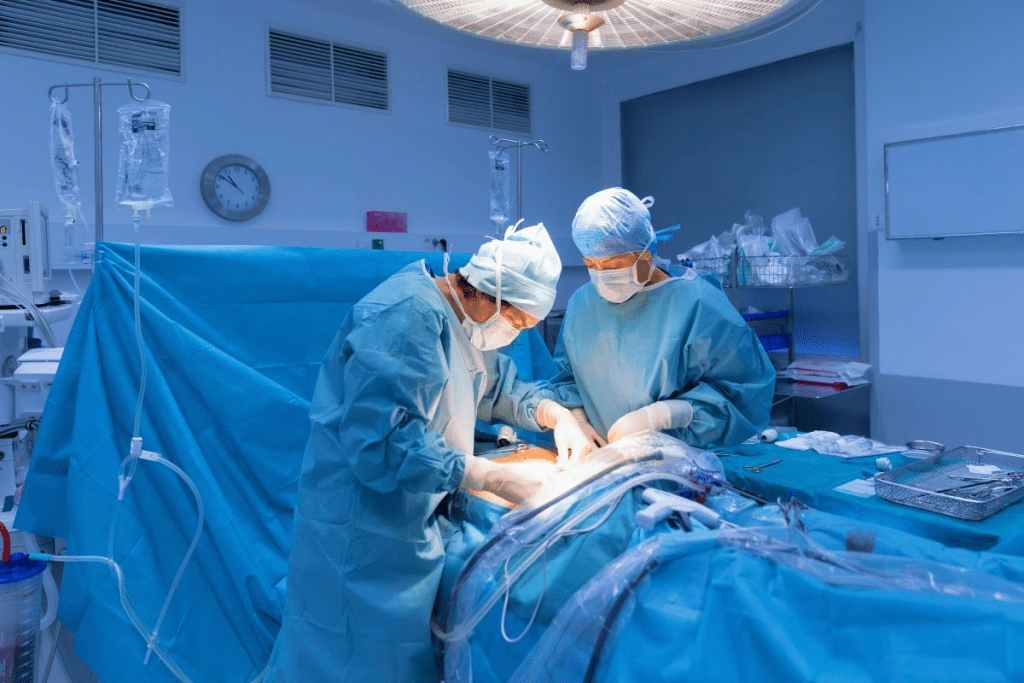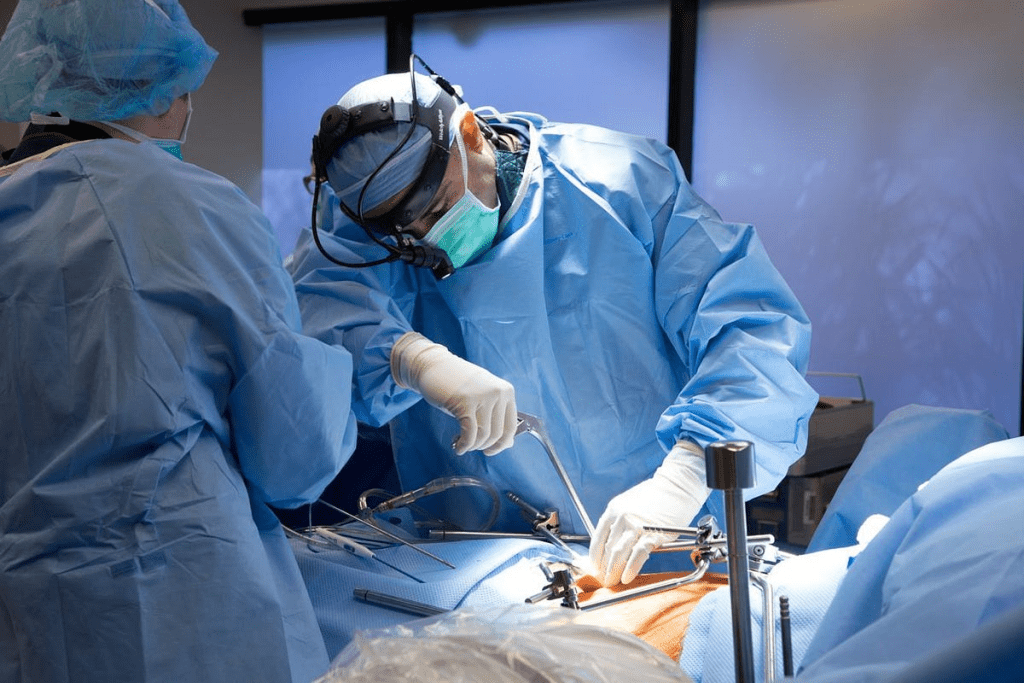Last Updated on November 14, 2025 by

Pediatric surgery covers many surgical procedures for kids. These include fixing birth defects and treating injuries. Every year, about 3.9 million surgeries are done on kids in the US. This affects 4.7% of all children.
Some of the most common types of surgeries are for injuries, birth defects, and stomach problems. Knowing about these common surgeries helps families and doctors make better choices.

Pediatric surgery covers a wide range of conditions that need surgery. Every year, many surgeries are done on kids. These surgeries greatly affect their health.
In the United States, about 3.9 million pediatric surgeries happen each year. This shows how vital pediatric surgery is. It highlights the need for expert surgeons and good healthcare facilities.
These surgeries vary from simple to complex. They all aim to make kids healthier and happier.
Pediatric surgeries fall into several main areas. These include injuries, birth defects, and stomach problems. Knowing how these cases are spread helps doctors and policymakers plan better.
Injuries cause nearly 40% of all surgeries in kids. Fractures and trauma are big issues. Birth defect fixes and stomach surgeries also take up a lot of time and effort.
40% of kids in the hospital for surgery are there because of injuries. These injuries often happen from accidents, falls, or sports. The most common surgery for kids include fixing broken bones and managing trauma.
Broken bones are a big reason kids need surgery. Fracture repairs and procedures help fix bones and make sure they heal properly. These surgical procedures are key to avoiding long-term problems.
How doctors fix broken bones depends on the break. They might use:
Handling trauma is a big part of pediatric surgery. Injuries can cause internal damage or bleeding. Emergency surgical interventions are needed to keep the patient stable and alive.
Good trauma care needs a team effort. This includes:
“The key to successful trauma management lies in the ability to act quickly and decisively, ensuring that pediatric patients receive the care they need in a timely manner.”
By focusing on skilled surgical procedures and quick action, we can help kids recover better from injury surgeries.

Fixing congenital anomalies is key in pediatric surgery, helping many young patients. These anomalies happen during fetal development. They need fixing for kids to stay healthy.
Recent data shows congenital anomaly corrections make up about 26% of surgeries for kids. These surgeries fix many different congenital conditions.
Inguinal hernia repair is a top surgery for kids. It happens when part of the intestine bulges through a weak spot in the belly muscles. Surgery is needed to avoid serious problems.
Many kids get this surgery, showing how important early treatment is.
Hydrocele is another surgery needed for kids. It’s when fluid builds up around a testicle, causing swelling. Some hydroceles go away on their own, but others need surgery.
Doctors watch hydroceles closely to decide when to operate. Surgery usually involves draining the fluid and fixing any problems.
Pyloric stenosis blocks food from moving into the small intestine. It’s a common reason for vomiting in babies. It needs quick surgery to fix.
The surgery, called pyloromyotomy, cuts the thickened muscle. This helps food move through the stomach again.
Gastrointestinal surgeries are key in pediatric care, making up 15% of all surgeries for kids. These operations help treat serious issues like acute appendicitis and intussusception. They need quick and effective surgery to fix.
It’s vital to know about these surgeries to ease worries and improve care for kids. By diving into the details, we can see the complexity and the need for expert care.
Acute appendicitis is a common emergency that needs fast surgery. An appendectomy, or the removal of the appendix, is the usual fix. This stops the appendix from bursting, which could cause bigger problems.
The surgery can be done open or laparoscopically, based on the case and the patient’s health. Laparoscopic surgery is less invasive, leading to smaller cuts, less pain, and faster healing.
Intussusception is when part of the intestine slides into another, causing blockage or lack of blood flow. First, doctors try an air enema reduction, a non-surgical method to clear the blockage.
If an air enema doesn’t work or if the problem comes back, surgery might be needed. We do surgery to fix the intussusception and stop further issues.
Knowing about these surgeries is key to giving kids the best care. By understanding the details, we aim to achieve better outcomes and top-notch care.
In the U.S., some surgeries are done more often than others. These surgeries help kids with many health problems, like infections and birth defects.
These common surgeries are key in pediatric care. They show us what health issues are most common in kids.
Tonsillectomy and adenoidectomy are the top surgeries for kids, with over 100,000 done each year. They help with recurring tonsillitis or big adenoids, which can disrupt sleep and cause other issues.
There are different ways to do these surgeries now. They aim to make recovery faster and hurt less. It matters how old the child is and how bad their symptoms are.
Abscess drainage is a common surgery for kids, needed for bacterial infections that cause abscesses. It’s important to manage these infections well to avoid more problems.
Urological surgeries are also common in kids. They fix issues like hypospadias, undescended testes, and other urinary problems. These surgeries are vital for fixing birth defects that can affect health later on.
New techniques in urological surgery have made things better for kids. Now, many surgeries are done with less invasive methods. This means kids recover faster and feel less pain after surgery.
As we wrap up our look at common surgeries in pediatric care, it’s clear that progress is making a big difference. New surgical methods and better care are helping kids get better faster. This shows how complex and changing this field is.
At LivHospital, we’re dedicated to top-notch healthcare for kids. We offer full support to international patients, making sure they get the best care. Our goal is to lead the way in improving surgical results for children.
We aim to give kids the best care possible, using the newest medical tools and techniques. This way, we hope to make their recovery and experience better for them and their families.
Pediatric surgeries often include fixing injuries, correcting birth defects, and treating the stomach and intestines. This includes removing tonsils, adenoids, and sometimes the appendix.
The most common surgery for birth defects is fixing inguinal hernias. This is done to prevent serious problems.
Kids often need surgery for their stomach and intestines. This includes removing the appendix for infections and fixing bowel blockages.
In the US, about 3.9 million surgeries are done on kids every year. These surgeries treat injuries, birth defects, and stomach problems.
Around 40% of surgeries on kids are because of injuries. These surgeries fix broken bones and manage trauma.
Removing tonsils and adenoids is very common in kids. It’s done over 100,000 times a year. It helps with infections and breathing issues.
Pediatric surgeons use their skills to quickly treat injuries. They fix broken bones and do emergency surgeries.
Kids may need surgery for their urinary system and genital area. This is for birth defects or infections.
Subscribe to our e-newsletter to stay informed about the latest innovations in the world of health and exclusive offers!